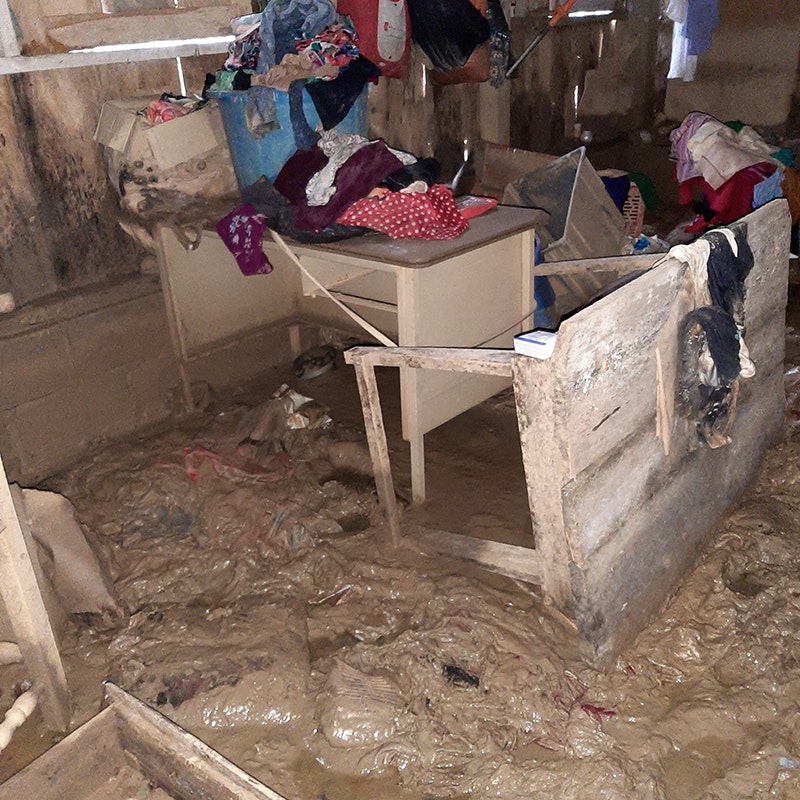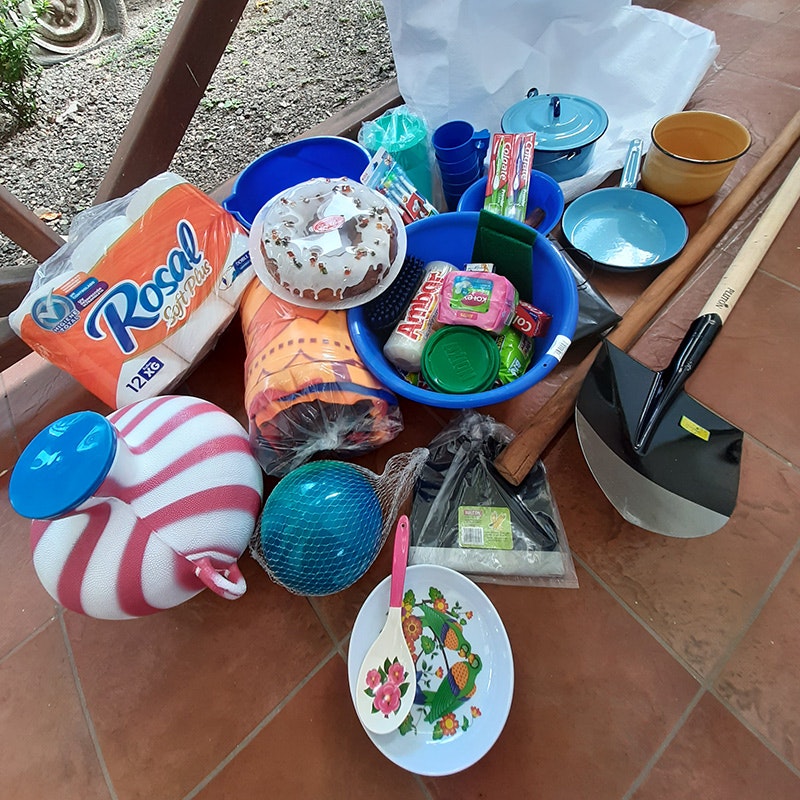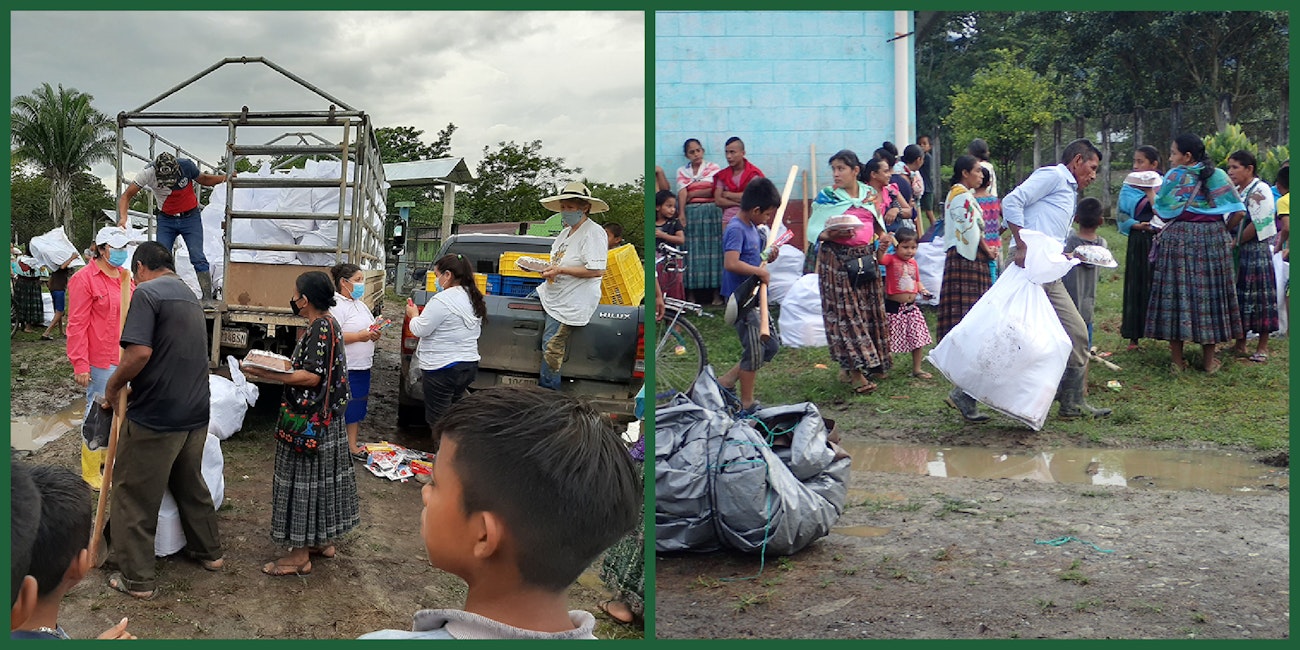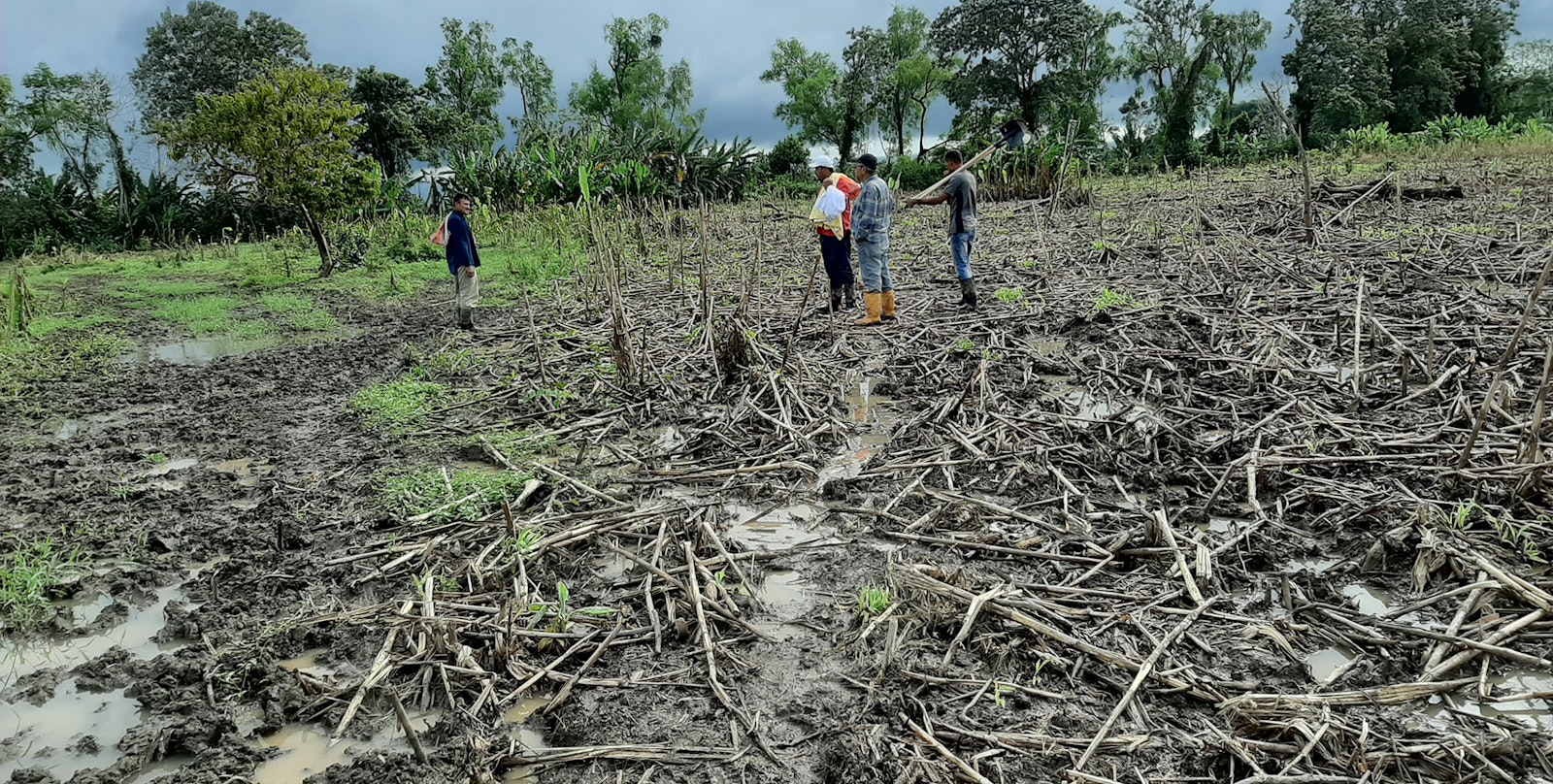Besides having written the iconic Learning to Weave, Deborah Chandler has always inspired us through her work with the Mayan weavers of Guatemala. When we learned she was assisting the communities hard hit by the devastating effects of the 2020 hurricanes, we asked her to write a post for us about the situation and how we might be able to help. —Susan and Christina
The biggest change COVID-19 made in my life was that staying home for 7 months got me back onto my loom, and I have been weaving steadily ever since. Heaven. Until the storms Eta and Iota came. Passing first over Nicaragua and Honduras, they were designated lesser storms when they got to Guatemala, but that only meant no wind. We still got more rain than even people accustomed to tropical rains could fathom. Villages were inundated, either under water for up to 2 months or permanently buried by mudslides. Hundreds of thousands of acres of crops were destroyed, as were a great many homes. Even Cobán, a fairly large city, had people floating around the streets in boats for days. Christmas came, and it was still raining.
The area hit first and hardest was the lowlands around Lake Izabal, an area that is chilly now but in general is everything that comes to mind with the word tropics: hot, humid, jungly. After these storms, add “mud.” I grew up on a farm, and I’ve seen plenty of mud in my life, but this took it to a whole new level.

Talk about mud! One of the rooms in our guide’s house. Underneath the mud is a concrete floor.
Fortunately my adopted family here is moved to help in situations like this, and very quickly we went into action providing relief supplies as we were able. First was food and hygiene items taken on an emergency basis to half a dozen communities. Then came larger supply runs for longer-term help: shovels and hoes for mud removal, household utensils, blankets, balls for the kids, and more.

Contents of the longer-term help relief sacks.
The delivery shown below took us to a Maya Q’eqchi community I had never visited before, Pombaaq, El Estor, Izabal. I chose these two pictures for Handwoven readers to show the clothing these very traditional Mayan women wear. Unlike other Mayan women in more of Guatemala, these women mostly do not wear huipils, handwoven upper garments, and in fact the black one in the picture on the left was the only huipil we saw that day. Why? Too hot. Way too hot.

Left, receiving deliveries of much-needed staples. Right, Starting the muddy trek home. Note the cotton jaspe skirts worn by the women.
The women do wear the same corte, or skirts, as other Mayan women, many yards of cotton jaspe (ikat) fabric gathered with a draw string and worn long. Other places they are worn shorter, and most often as wrap arounds, but here they are gathered and long. On top, most women are wearing what we would call the top half of a slip, and for a shawl they will use a happy-colored towel. In all this muck, while most men wear tall rubber boots, the women wear simple sandals or flats or go barefoot. A woman who lives in the next village over told me that the women do weave, and do have huipils, but only wear them at home, feeling that a commercial blusa or the camisole/slip top is better for public use. Hard to wrap our heads around that idea, but that is the beauty of experiencing different cultures with different viewpoints.
But back to what we were doing there. My friend Teresa’s niece Maritza is our team leader. Her job as Director of AMASURLI, which oversees the entire watershed of Lake Izabal, gives her contacts both governmental and private in the worst-flooded areas. The mandate from the Ministry of the Environment is, “Do anything you can to help.” So Maritza and her entire staff, as well as the family, have dedicated many days already, with more to come, to acquiring supplies like those shown in the picture, some 4,000 items from 15 suppliers in 3 cities, all going to another location to be organized. The largest donations so far have gone to 112 families in 2 communities. We are gearing up for more in the coming month, which we are very happy will include rolls of fish line for making nets so those who live by the river and lake will be able to start working once again. If you click here, you will see a map of the damaged areas of the country in various shades of reddish, depending on how hard they were hit. Then there are some areas that are just blue—that means water, lots and lots of water. Those west of the lake and near the Atlantic Ocean are where we are working—thanks to the donations of many friends in the United States and Guatemala.
How to Help
The primary purpose of this post is to let you know what has happened and is happening in Guatemala, a story that affects a great many artisans. Second is to let you know how you can help if you feel so inclined.
Heidi McKinnon of Santa Fe, New Mexico, is working specifically with weavers’ groups in Alta Verapaz. To start with, her efforts have been focused on providing roofing materials. Now, they have a fund going that will be dedicated to buying looms and yarns, so the weavers can get started working again as soon as their homes are stable. If you want to support Heidi McKinnon’s efforts for the weavers of Samac, go to her GoFundMe page, Hurricane Eta Relief for Samac Cooperative. Heidi is planning to give each weaver $50 worth of materials, and she is aiming to supply 60 weavers to start. Of course, any size donation is welcome.
Another player in the relief work area is Rotary. There are a number of Rotary Clubs in Guatemala, and they are working in many locations, including the hard-to-get-to mountains of Huehuetenango and the Ixil region of northern Quiche. You can see pictures of their deliveries on their Facebook page. The big advantage they have over us is their size—they have a much broader reach, and like all of us, are putting all donations into aid, not administration. Esther Brol is the wonderful woman I have been corresponding with there, and if you want more information about their efforts, you can write to her in English or Spanish at [email protected].
As I said above, our efforts are supported by donations as well, and if you want to help, we are happy to accept. Please write to me at [email protected] for details about how to donate.
I know that there are more worthy causes than any of us can respond to, so if financial help is not an option, we still welcome good thoughts, prayers, hopes, and spreading the word. Thank you for caring; that’s all we are really hoping for.
Deborah Chandler is the author of Learning to Weave (1995), and more recently, Traditional Weavers of Guatemala: Their Stories, Their Lives in 2015, (Thrums Books), and A Textile Traveler's Guide to Guatemala that came out in 2019 (Thrums Books).

